Fa anys que explico a qui m'ho pregunta que les senyeres de l'epoca Tudor sobre fons platejat o blanc eren angleses (vegeu detall mĂ©s avall) SĂłn l'origen de la bandera de la West indian Co. i mĂ©s tard de la bandera americana..Per mostrar la diferencia amb la nostra vaig escanejar un llibre meu comprat a Foyles als anys 80. (tĂ© una miqueta de moirè -interferència entre retĂcules-..)De fet aquest quadre que estĂ al London Apothecaries Library demostra que hi havia naus catalanes a "La invencible", com a colofĂł en Cesc Garrido va mostrar al 14Ă© simposi un document que provĂ©Â dels arxius venecians on amb totes les lletres es diu que "Francis Drake va cremar les naus catalanes"
Es aquest: 714. Giovanni Mocenigo, Venetian Ambassador in France, to the Doge and Senate. (la segona)
L'anglès, a més de la crema de les naus catalanes, a bord dels quals es van perdre cinquanta mil corones, va capturar un vaixell pertanyent al senyor Pedro de Valdez, amb quatre-cents cinquanta espanyols a bord, i una gran quantitat d'artilleria de campanya que havia estat utilitzat com a llast.
Després de l'intent de Drake per disparar contra l'Armada, que es va salvar tallant els seus cables, els espanyols mai s'han aventurat a fondejar.
El dia 10 una forta tempesta des del sud-oest va explotar, i va conduir l'Armada per l’ estrets de Dover, seguit per l'Anglès, que mai els va deixar sol per un minut.
El mateix Drake va enviar un missatge a casa que la tempesta s'estava fent mĂ©s pesada, i que era probable que l'Armada seria rebutjada cap el Mar del Nord a la costa d'Escòcia, on fins i tot l'anglès trobar difĂcil fer una bona navegaciĂł. Ell va assetjar dia i nit el'nemic que sempre estava recollint un vaixell o dos, i estaven en l'Ăşltim extrem navegant per l'aigua, desd de que havien sortit de La Corunya, i ………….
Quadre escanejat on hi manca part de la senyera (llom del llibre) by M.C.
Senyera re-creada amb copy paste per M.C.
Quadre amb menys ressoluciĂł on no hi manca la part de la senyera
ExplicaciĂł by M.C.
Tudor Ensigns with red and white stripes
Source: These flags were shown on a painting of the H.M.S. Tiger by Van de VeldeThe Flags of the World (1896) by Frederick Edward Hulme, p 41 Pete Loeser, 5 May 2013
Flag hoisted at the poop (9 stripes)
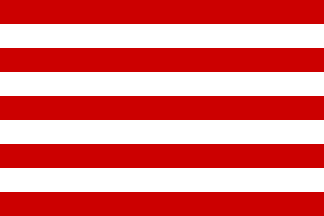 image by Tomislav Todorović, 07 May 2013
image by Tomislav Todorović, 07 May 2013
Â
Flag hoisted at the bow
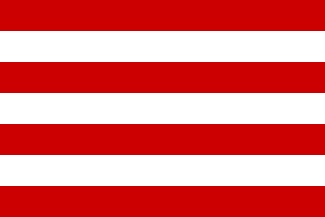 image by Tomislav Todorović, 07 May 2013
image by Tomislav Todorović, 07 May 2013
Â
Flags hoisted at the mastheads
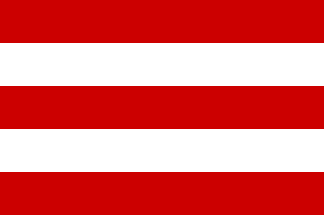 image by Tomislav Todorović, 07 May 2013
image by Tomislav Todorović, 07 May 2013
The flags with same design were hoisted at three mastheads of the ship.
Tudor Ensigns
AcĂ el teniu el quadre de la invencible amb mĂ©s ressoluciĂł al tanto que no totes sĂłn senyeres nostres..apart que la "England's flag Ă©s la creu de St.George".. les de barres bermelles sĂłn del Tudor (Isabel I).. origen de la bandera de la West indian Co. i desprès de la americana.. He marcat les que jo penso que sĂ que sĂłn senyeres catalanesFa uns anys ja em vaig discutir amb un de la FAES anglesa per raĂł d'aquest quadre que vaig penjar a commons reconstruit per mĂ... acĂ en teniu la prova -> senyera feta a má
Vull tornar a remarcar que a la Reina Verge la pinten amb una bandera molt semblant a la catalana (amb fons blanc o platejat) la que, com he dit abans, més tard donaria origen a la de la "West Indian Company"Vegeu el quadre del naufragi del gallió Girona, encara que modern.. és important... i.. aquesta foto és curiosa us recopio la meva discussió amb el paio de la FAES anglesa premeu tots els hotlinks=> són importants!!!Explicació banderes
Apart de la senyera i la creu de S.Jordi .. mireu que diferent Ă©s el niu de corb (cofa) de la nau amb la bandera Tudor, comparat amb els dos vaixells que he assenyalat amb senyera catalana
Heus acĂ el punt! La creu de Sant Jordi, si apareix a una nau nostra... mai ha estat un signe castellĂ .. sinĂł catalĂ ! ... Felip V la va prohibir que en els decrets de Nova Planta.
Panorama
I notice the article has aquired a panorama; I've moved it down, as it was too obtrusive parked in the middle of the History section. I've also converted it to a normal image file.
The caption there (and on the image) said "At least two catalan flags hoisted on two Armada ships against what it has been said officially in the spanish records" which seems prety dubious, so I've brought it here for discussion.
I presume it refers to the red-striped flag on the foreground ship; is there any evidence this flag represents Catalonia? The figure referred to as Elizabeth I has the same flag, as does the ship ahead of the galleass, together with the flag of St George; so I'd hazard a guess the flag in question represents England. And the List of ships of the Spanish Armada doesn't mention a Catalan squadron. Does anybody know any more about this? Xyl 54 (talk) 15:24, 6 October 2011 (UTC)
- Xyl54..First of all... there is a main difference between the Queen's flag (5 red stripes on white) & the catalan flag (4 red stripes on yellow)...
- If you read thouroughtly this you will learn why it may exist St.George cross and the catalan flag on the same ship
| “ |
Lord Howard in Ark Royal versus the Duke of Medina Sidonia in San Martin
Both ships share the red cross on a white background, the symbol of crusader and St George
|
” |
- Well! here is the point! St.George's cross has never been a Castilian sign.. but.. a Catalan sign!... Philip V has banned it in the Nueva Planta decrees.
- Flags explanation... besides.. look how different is the Crow's nest of the ship with the Tudor flag, from the two ships I've pointed as catalan
- St.George cross in Lepanto
- St.George cross with Jaume I
- I have a bunch of books prior to 1969 that in the list of armada ships do not mention La Girona (can it be more catalan?), of course after the wreck was found they couldn't deny it.. but saying the name came from his owner, someone undocumented called GirĂłn
- Mixture of St.George cross with catalan flags...England won..the ship that's sinking half top-left.. must be spanish.. look at the flag&aft-castle&crow's nest...
- --Mcapdevila (talk) 09:59, 7 October 2011 (UTC)
- OK Manuel; first of all, your edits posting of the picture here, and on Commons, look like you are trying to make a point, and are contrary to WP policy on maintaining a neutral point of view.
- As far as this article is concerned it was the armada of the King of Spain and "was composed of 151 ships, 8,000 sailors and 18,000 soldiers, and bore 1,500 brass guns and 1,000 iron guns"; where they came from, and where their crews were born, is not an issue for this article, though it might be relevant at the "List of Ships" article. If you have a reliable English language source that describes a Catalan squadron in the Armada, or lists some specifically Catalan ships, then you should suggest it’s addition on the talkpage there.
- The issue for this article is whether it is improved by the addition of a panoramic view of Senyeres’ painting, which I’d say is borderline. I’ve made some improvements to the arrangement and positioning of it, but what it does not need is a caption seeking to make some point about Catalan nationalism. Do you see? Xyl 54 (talk) 14:35, 7 October 2011 (UTC)

Gravelines coast with no cliffs.
— Preceding unsigned comment added by Mcapdevila (talk • contribs) 18:38, 7 October 2011 (UTC)

This is just a sample of the tipical Cornwall coastline with cliffs
Preceding unsigned comment added by Mcapdevila (talk • contribs) 18:49, 7 October 2011 (UTC)
(I've moved these down, per Talk page guidelines; contributions should be in chronological order. Second image converted to File, and signed using "unsigned" template. Xyl 54 (talk) 13:49, 8 October 2011 (UTC))
- What are you trying to say here, exactly? Xyl 54 (talk) 13:51, 8 October 2011 (UTC)
So now the caption reads
"A painting of Nicholas Hilliard (who fought in the battle), showing the "Invincible Armada" sailing off the "cliffs" of the coast of Cornwall (mistaken by some authors, for the Gravelines coast, wich has no "cliffs" at all). At least two Spanish flags hoisted on two Armada ships, one in the center of the picture. (Not to be confused with that of Elizabeth I watching from ashore)."
which is pretty pointy.
It is also Original Research; what is the source for any of the statements made? The only neutral thing that can be said out of this is that it is a painting by Nicholas Hilliard, and that it depicts the Armada.
So I suggest the caption "“The Armada” by Nicholas Hilliard". OK? Xyl 54 (talk) 13:58, 8 October 2011 (UTC)
- I have removed all catalan references so please stop talking about INH whatsoever..
- I have no references for Plymouth (although obvious) but I inserted the refs. for "red+and+yellow+spanish+ensign" do you want more? Relating to the "borderline" you stated.. I will add that "Una, grande y libre ended in 1978..thanks for your impartiality (when you said it was an english flag you were not impartial at all..)--Mcapdevila (talk) 14:22, 8 October 2011 (UTC)
- You need to stop edit warring over this, and come to an agreement.
- And thank you for the reference, but you are missing the point.
- You've stated that this is “the "Invincible Armada" sailing off the "cliffs" of the coast of Cornwall” and that some authors “mistakenly” say these are the Gravelines coast; however plausible your reasoning, it is Original Research unless you can back it up. This (at the BBC website) calls it “The Battle of Gravelines” as does your reference which states “it must be the battle of Gravelines” (p129).
- You also say this is “a painting of Nicholas Hilliard” (which I’d accepted), though your ref says this “cannot be supported” (p126); you also say that he “fought in the battle”; where is your evidence of that?
- Also, your comments in the article, about my query over the English flag, is editing to make a point; those comments should have been made here. And I've no idea what your comment about 1978 is supposed to mean, but my comment about the image being "borderline" is colloquial; it means I felt the value of the image to the article is marginal, particularly if it is going to be a cause of conlict; if that is the case we can probably do without it.
- As for the rest of your caption, the image is supposed to illustrate the subject; I fail to see the importance of pointing out that two of the Spanish ships are flying Spanish flags or that Elizabeth I is standing by an English flag.
- Your reference (p123) states the painting is “Elizabeth I and the Spanish Armada” and is attributed to the Worshipful Society of Apothecaries; my ref says it is “The Battle of Gravelines” by Nicholas Hilliard; which caption do you want to use? Xyl 54 (talk) 15:28, 8 October 2011 (UTC)
- Ok, I couldn't express with more concise words the reference I've contributed with the superb work carried out by Karen Hearn. I've modified the last reference with my original reference of page 129 that explains much better the "Gravelines" choice for the title.--Mcapdevila (talk) 05:02, 9 October 2011 (UTC)
- Fair enough, your reference is better, there; it takes the reader to the description, without having to comb the article for it. Are you happy with the caption as it stands, now? Xyl 54 (talk) 12:53, 9 October 2011 (UTC)
- I've said your caption is brilliant, but you didn't know how to differentiate a Catalan flag from an english flag in those paintings (as all my colleagues at INH.cat do but the other way round). I know a little about it for I've been studying the Armada since 1971. I arrived at Cowes as a Baron Yachting Instruments service engineer in 1971, and one of my coleagues shouted at me "Hi wog.. how is your fleet since the last time we sunked it? Here came my interest about it.. I've been sailing along all the southern coast with my good friend Rodney Pattisson so I know most of it--85.50.90.36 (talk) 16:10, 9 October 2011 (UTC)..Sorry..my IP..
- Therefore one day I will make an article to teach people how to differenciate them, this is the goal of wikipedia isn't it? at least that was my conversation with Jimmy Wales last year at Gdansk "creating a WYSIWYG interface to allow retired professionals (lawyers, architects, etc...) editing good articles on their speciality to teach other people their knowledge".. he agreed with me and said that a WYSIWYG editor is planned for 2012.--Mcapdevila (talk) 16:18, 9 October 2011 (UTC)


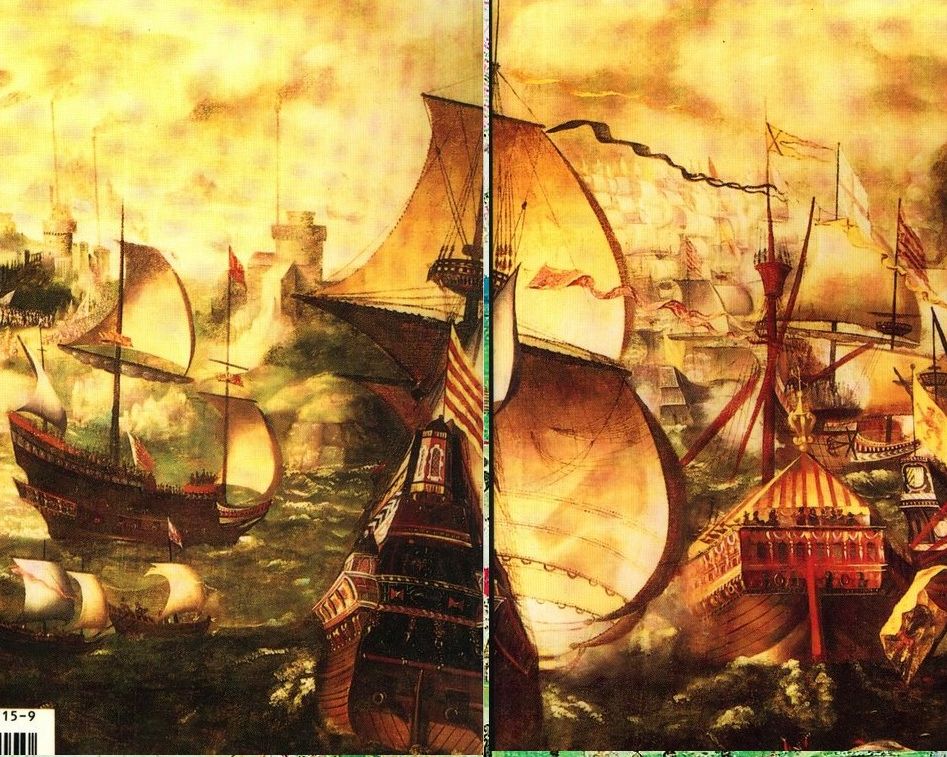


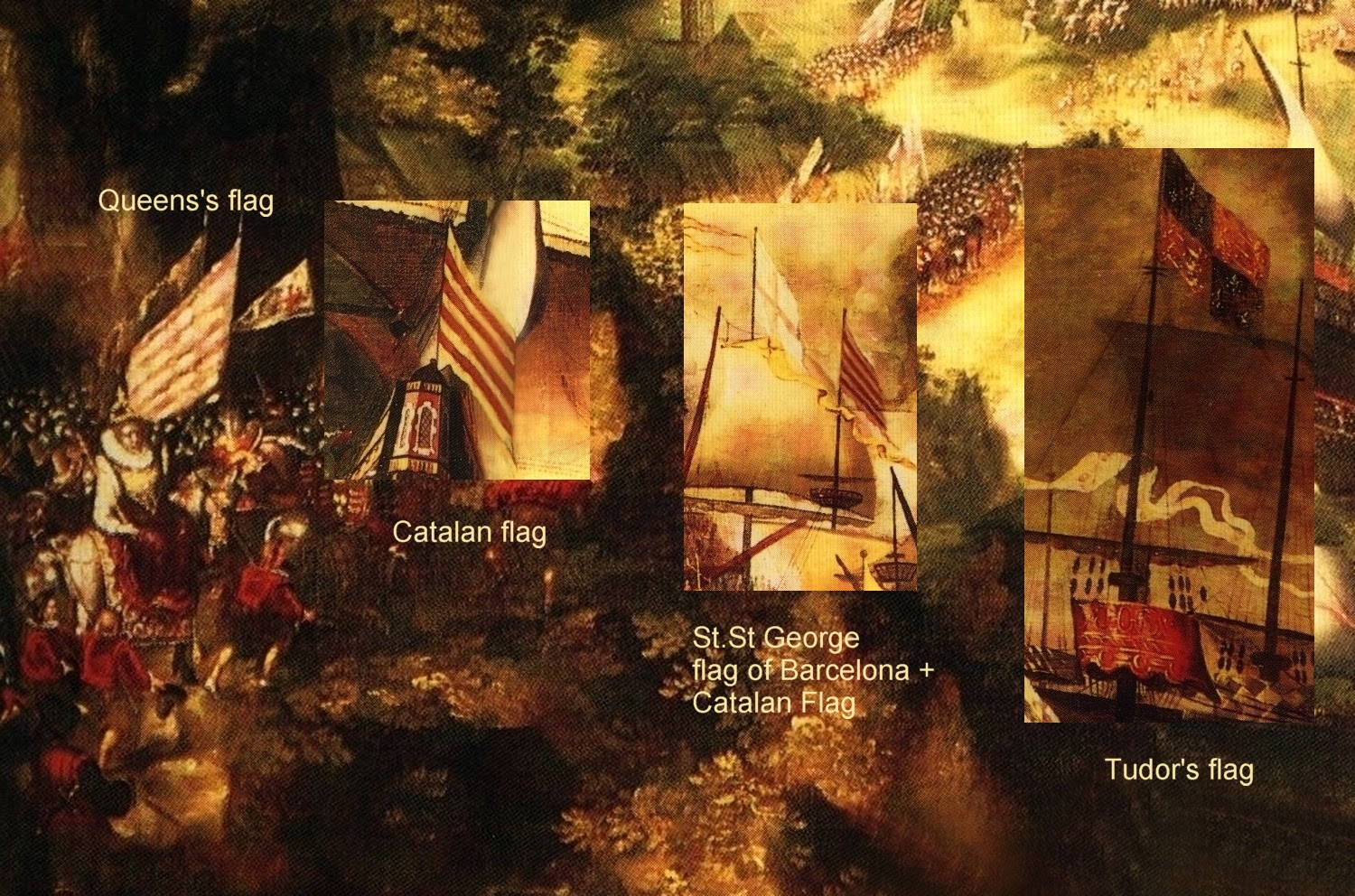
 image by Tomislav Todorović, 07 May 2013
image by Tomislav Todorović, 07 May 2013 image by Tomislav Todorović, 07 May 2013
image by Tomislav Todorović, 07 May 2013 image by Tomislav Todorović, 07 May 2013
image by Tomislav Todorović, 07 May 2013



Afegeix-hi un comentari: